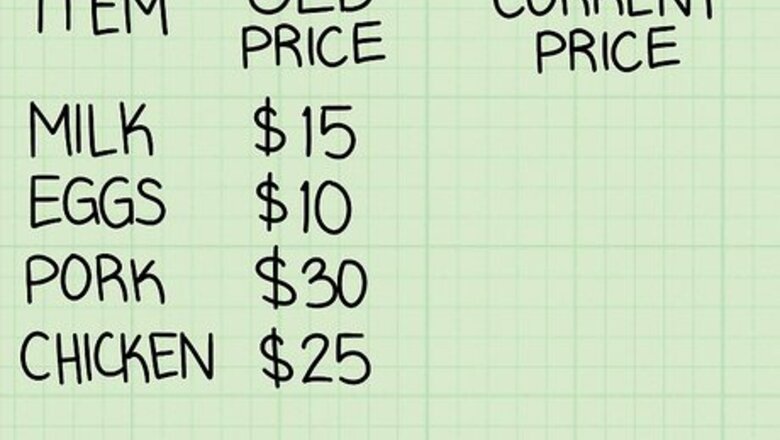
views
Making a Sample Calculation of the CPI
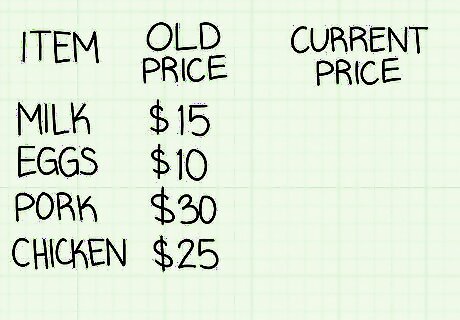
Find a record of past prices. Grocery receipts from the past year would work well for this purpose. For accurate calculations, use a sampling of prices based on a relatively brief period of time--perhaps just one or two months of the previous year. If you are using old receipts, make sure that they have the date on them. Simply knowing that the prices listed are not current does not illustrate any real point. The change in CPI is only relevant if calculated for a specifically quantifiable amount of time.
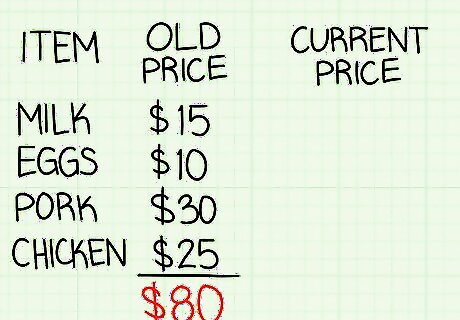
Add together the prices of the items purchased previously. Using the record of past prices, add together a sampling of those product prices. Normally, the CPI is restricted to some of the most commonly used consumer items--foods such as milk and eggs, and others such as laundry detergent and shampoo. If you are using a record of your own purchases and are trying to determine the general trend in prices and not merely the change of a single item, you may want to exclude those items that are only occasional purchases.
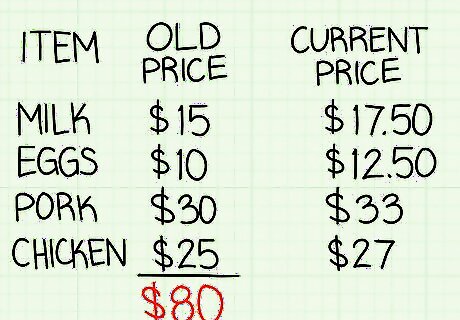
Find a record of current prices. Again, receipts would function well for this purpose. If you are using a relatively small sample of items, you may be able to find the prices in flyers sent out by retail stores. It may be useful, for the sake of comparison, to make sure the prices used are based upon the same brands and from the same retailer. Because of the price differences at each store and from brand to brand, the only way to track the change of prices over time is to minimize these variables.
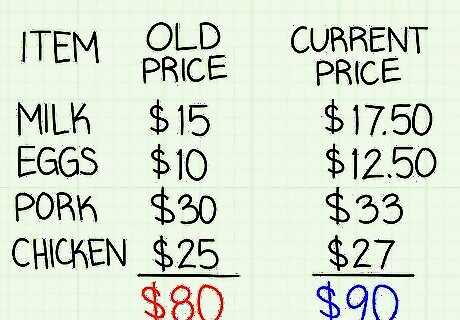
Add together the current prices. You must use an identical list of items as you used when you added the prices of past items together. For example, if one loaf of bread was in your first list, one loaf of bread must be part of the list of current prices.
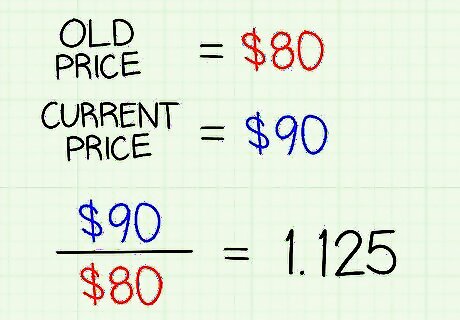
Divide current prices by the old prices. For example, if the total of current prices amounted to $90 and the old prices equaled $80, the result is 1.125 (represented mathematically, 90÷80=1.125).
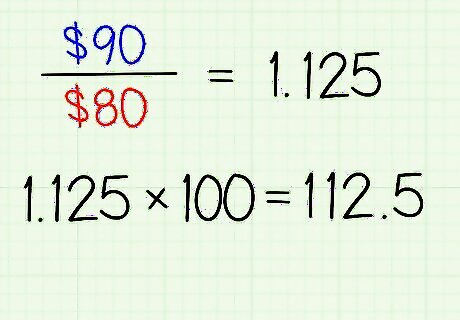
Multiply the result by 100. The baseline for the CPI is 100--that is, the initial reference point, when compared to itself, equals 100%-- and so make your figure comparable. Think of the CPI as a percentage. Past prices represent a baseline, and that baseline is described as 100% of itself. Using the previous example, current prices would be 112.5% of the previous prices.
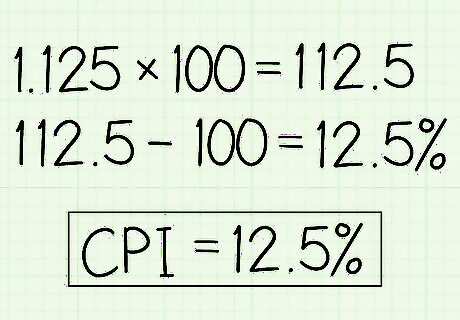
Subtract 100 from the new result to find the change in CPI. By doing this, you are subtracting the baseline--represented by the number 100--to determine the change over time. Again, using the above example, the result would be 12.5, representing a 12.5% change in prices from the first period to the second. Positive results represent the rate of inflation; negative numbers reflect deflation (a rare fairly rare phenomenon in most of the world since the mid-twentieth century).
Calculating Price Changes for a Single Item
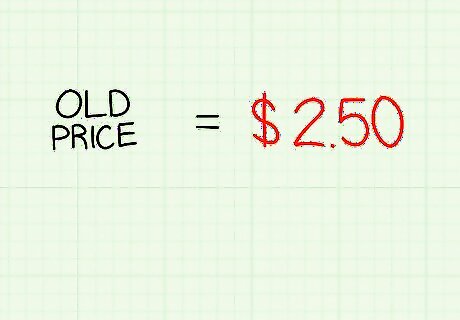
Find the price of a single item that you purchased in the past. Try to find something that you have an exact number for, and that you have recently purchased as well.
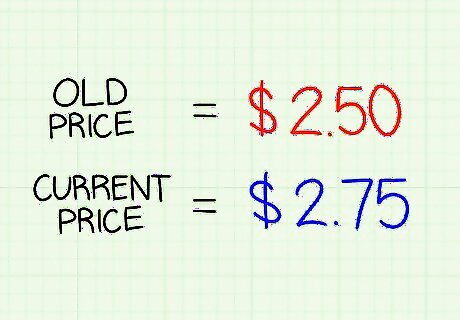
Find the current price of the same item. It is best to compare the prices of the same brand of item that was purchased as the same store. Again, the purpose of CPI is not to determine how much you are saving by shopping at a different store or switching to generic brands. Also avoid comparing sale items. The official CPI calculated by the Federal Bureau of Labor Statistics uses a large number of items found in a variety of locations in order to eliminate short-term fluctuations. Calculating the change for individual items is still worthwhile, but sales are another variable that should be eliminated.
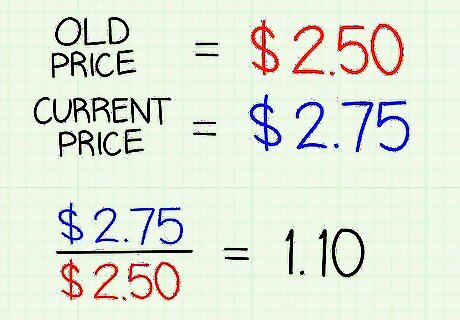
Divide the current price by the earlier price. So, if a box of cereal once cost $2.50 but now costs $2.75, the result should be 1.1 (represented mathematically, 2.75÷2.5=1.1).
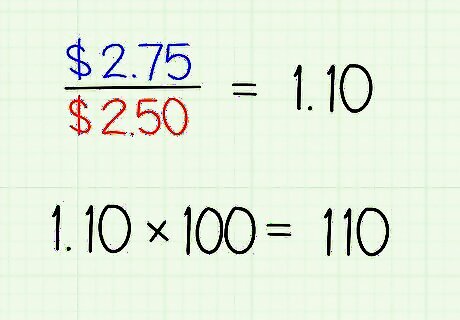
Multiply the results by 100. Again, because the baseline for the CPI is 100--that is, the initial reference point, when compared to itself, equals 100%-- make your figure comparable. Using the example, the CPI would be 110.
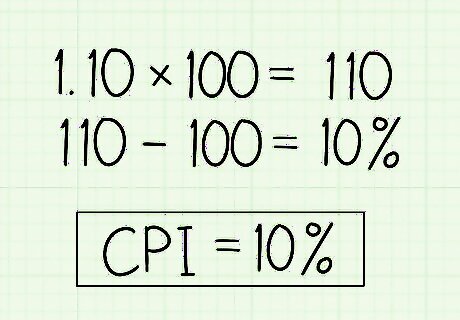
Subtract 100 from the CPI to determine the change in prices. In the case of the example, 110 minus 100 equals 10. That means that the price of the particular item examined has increased by 10% over time.




















Comments
0 comment